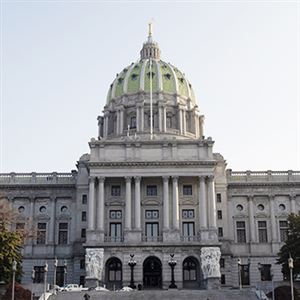School districts around the region are adopting budgets for 2017-18. Here are some of the latest to approve spending plans for next year.
Penn Hills
School directors on Monday narrowly passed an $84.4 million budget for 2017-18 that raises the real estate tax rate by 1.25 mills, bringing the rate to 27.55 mills.
The new budget is balanced, but the district continues to carry an overall debt of approximately $170 million.
At the beginning of this month, the district announced that the state Department of Education is assigning a consultant to help the district with its finances.
The action follows a highly critical audit of the district that was released in May 2016 by state Auditor General Eugene DePasquale. The auditor's report found that the district's former superintendent and school board had not held accountable its former business manager.
Superintendent Nancy Hines said earlier this month that the financial situation stems from the district's borrowing, beginning in 2009, to fund construction of high school and elementary complexes.
The vote on next year’s budget was 5-4, with Pauline Calabrese, Jennifer Burgess-Johnson, Erin Vecchio and Denise Graham-Shealey opposed. George Sens, Robert Hudak, Marlon Ferguson, Donyelle Owen and Katherine Mowry voted in favor.
“My ‘no’ vote is not a reflection of the current superintendent and business manager,” Ms. Calabrese said. “A lot of people made a lot of money on the construction of new schools. Penn Hills taxpayers should not have to bear the burden of predatory lending practices by whoever approved those bond issues.” She has repeatedly advocated for pursuing financial assistance from the state, saying the debt is too big to be managed by the local tax base.
Ms. Burgess-Johnson, who also voted against the budget, expressed her displeasure with the fact that a preliminary budget was available to the public only through the school district’s website after technical problems prevented district officials from displaying the budget documents at a meeting in May.
Other board members cited a lack of faith in the accuracy of projections in the budget. Ms. Graham-Shealey told business manager David Roussos, “I am not sure we have the actual spending figures. I don’t know that the numbers in this budget are accurate.”
Mr. Roussos defended the budget, saying that debt service payments, transportation costs and salary figures are known because they are contractual and that other, less-defined spending areas are within historical spending ranges.
— Tim Means
Moon Area
The school board on Monday adopted a 2017-18 budget that includes a real estate tax increase of 0.7452 mills to help alleviate a projected deficit of $4.4 million.
"When the former board majority took over, there was a surplus of $10 million," school board president Jerry Testa said.
A state audit of the district covering July 2012 to June 2015 cited financial and safety problems. Former superintendent Curt Baker was suspended in December 2015, and his contract was later terminated. Mr. Baker has filed a federal lawsuit against the district, saying his ouster was a breach of contract. The district has filed a motion to dismiss the suit but no ruling has been made on that motion.
At Monday’s meeting, board member James Bogatay noted that raising taxes will not be enough to eliminate the deficit and that policy changes are essential.
During the past year, the district managed to cut $1.5 million from the 2016-17 budget through implementing new practices.
"Our job isn't to put all of the burden on the taxpayers. We charged the administration with finding us money, and they did a great job of doing that," Mr. Bogatay said.
The new tax rate is 20.3028 mills. Expenses anticipated in the final budget are $78.5 million, which is a $4.25 million increase from last year. The majority of the increase is due to state pension funding as well as support staff and teachers contracts, acting superintendent Keith Bielby said.
Insurance costs rose by $31,000 in premiums. In an email read by school board member Mark Scappe, one insurance broker declined to provide quotes to the district, due to the state auditor general's report that identified procedural weaknesses in sports safety, where certain state school codes and district policies were violated.
The vote to increase the real estate tax rate was unanimous, with two members, Scott LaRue and Jeff Bussard, absent.
— Amy Philips-Haller
West Mifflin Area
Despite setbacks in state education funding and an influx of hundreds of new students in recent years, the district last week passed a $53 million budget with no property tax increase.
It’s the second year in a row that school directors and administrators have been able to find ways to balance the budget without raising taxes above the current rate of 24.496 mills or losing programming or curriculum.
In the budget adopted June 22, the district preserved programming, including a unique computer science and robotics program open to all students in grades 4-12 — such programming is typically reserved for gifted students -- along with a junior ROTC program at the high school with 150 student participants. The district also kept all-day kindergarten, summer music programs and new iPads for students in grades 6, 7 and 8.
The sacrifice, however, was three elementary teacher furloughs and larger class sizes.
Further complicating things for West Mifflin Area is the influx of 275 new students over the past several years from the Duquesne City School District, boosting total enrollment to about 2,900.
West Mifflin Area has received federal Title 1 payments totaling nearly $500,000 in the past three years to help educate the Duquesne students.
School director Phil Shar praised superintendent Dan Castagna for his visionary thinking in a tough financial climate and said he is doing a great job.
— Janice Crompton
Peters Township
The Peters Township School Board on Monday approved a budget for the 2017-18 school year that includes a tax increase.
The $64.3 million budget comes with an adjusted millage rate of 13.19 mills. The rate had to be adjusted because of the recent reassessment of Washington County.
The district’s 2016-17 millage rate was 113.4 and was based on 25 percent of the county’s 1981 market value. This year, properties are being assessed at 100 percent of the July 1, 2015, market value, hence the lower tax rate. With the reassessment, the equivalent tax rate would have been 12.88 mills, but the district needed to increase that rate by 0.31 mills in order to balance the budget.
The 13.19 mill tax rate means homeowners will pay $1,319 in school taxes for every $100,000 in assessed property value.
— Deana Carpenter
First Published: June 30, 2017, 4:00 a.m.















